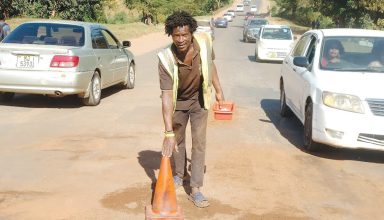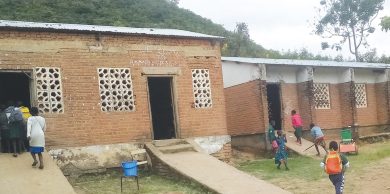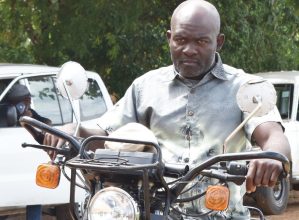Curbing cyclic food insecurity

Nothing better sums up Malawi’s extraordinary mix of challenges and opportunities than in its quest for lasting solution to food insecurity.
Every year, nearly a million households that go hungry—showing how the country fails to grow enough food to meet its own needs. Yet, the country has large tracts of the unused arable land suitable for maize production, the national definition of food security.
Global food supply needs to increase by an estimated 70 percent by 2050, presenting an opportunity for Malawians to cash in on maize exports. Sadly, the country is still struggling even to feed itself.
Notwithstanding billions of Kwachas invested in the Farm Input Subsidy Programme (Fisp) since 2005, millions continue to go without food during the lean season. Typically, the latest Malawi Vulnerable Assessment Committee (Mvac) report has shown that almost 1.5 million will be food insecure during the approaching growing season.
This may be a confirmation that Fisp is not the strategy Malawi needs to end food insufficiency.
So, what could be the lasting solution?
In a 2009, Chancellor College economics professor Ephraim Chirwa conducted research into the past performance and recent trends of agricultural growth and poverty reduction in the country.
According to Chirwa’s findings, the performance of the agricultural sector has been disappointing in spite of the many policy reforms.
The worrisome trend was neatly affirmed by the 2006 Ministry of Agriculture reports which indicated that the country’s agriculture is characterised by low and stagnant yields; over-dependence on rain-fed farming which increases vulnerability to weather related shocks; low level of irrigation development and uptake of improved farm inputs.
It reads: “In addition, there is low profitability of smallholder agriculture which has been influenced by weak links to markets, high transport costs, few farmer organizations, poor quality control and lack of market information.
“The interplay of these various factors has negatively affected agricultural development and growth, with implications on the contribution of agriculture towards poverty reduction,” it reads.
Michael Jana, who is studying for his PhD in South Africa, has researched and published widely on the political economics of agriculture in the country.
He argues the sector needs a sweeping review and re-organisation to achieve a turnaround.
“We need a radical approach to eventually phase out subsistence farming and bring about commercial farming, create jobs, bring good returns to capital and hopefully be able to fund and develop the industrial sector,” says Jana.
Published in 2011, Professor Chirwa’s article ‘From Subsistence to Smallholder Commercial Farming in Malawi: a Case of NASFAM Commercialisation Initiatives’ offers critical insight regarding the need for a radical shift.
“The dominance of subsistence farming with traditional farming systems in the smallholder sector is one of the concerns in achieving higher agricultural productivity,” writes Chirwa.
A government strategy on agriculture launched in 2006 recognises that intensification and commercialisation of smallholder agriculture are crucial to achieve increased productivity and profitability of smallholder farming.
So can commercialisation of maize production be the right means to achieve the food security?
Experts agree that commercialisation involves transition from traditional self-sufficiency goals towards income and profit-oriented decision-making.
Chirwa, however, notes that discussions around agriculture commercialisation tend to categorise growers into whether they own small farms or large farms and whether they grow cash crops or food crops—with simple distinctions made between ‘subsistence’ and ‘commercial’ or ‘export’ agriculture.
But for Jana, investing in subsistence farming is essentially hand-to-mouth. It can be costly to subsidise in the long-run.
“Government would rather gradually subsidise commercial farming that has the potential of producing profits and creating jobs both in that sector and other sectors,” he says.
The model of commercialisation Jana proposes is the one deceased president Bingu wa Mutharika envisaged in Green Belt Initiative (GBI). The initiative mirrors government realisation that even big farmers lack viable land holding size for commercial farming. To deal with the setback, government made a commitment to facilitate the acquisition of land from smallholder farmers.
“The large growers need vast acres for large production….Land has to be identified for them along the green belt and these have to be linked to the banking institutions for inputs such as machinery, fertilisers, seeds, pesticides, labour, and cash.
“Large growers will have to engage in discussions with local assemblies to relocate villages for intensified farming by using heavy machinery… Irrigation schemes [will] be owned by large-scale commercial farmers and corporate companies [who]…. will be responsible for developing and operating them.
“These will lease the land for a specified period of time as per the current land policy and thereafter determine their priority crops to produce and production strategies to employ,” reads the 2009 GBI concept paper.
But in joint paper released in 2011, Chirwa and political researchers—Dr Blessings Chinsinga, Dr Henry Chingaipe and Michael Chasukwa—observe that the country cannot easily go commercial using large-scale commercial farmers if it does not review its land laws because much of arable land is customary.
“Transfers of customary land in Malawi lack a definitive legal framework and are probably the most politically sensitive component of the GBI. The role of traditional leaders, given their position in the network of political patronage, is likely to yield more and perhaps violent conflicts as land transfers under the GBI scale-up,” reads the paper titled The Political Economy of Land Alienation: Exploring ‘Land Grabs’ in the Green Belt Initiative in Malawi,
The challenges of land ownership were addressed in the Land Bill which President Joyce Band referred back to the drawer after being passed by Parliament this year. The legislation, under review, offers hope for the quest for commercialisation.
Apart from calls for the reform of land laws, GBI is stuck at the design phase.
“Inadequate funding, access to land, misconceptions among communities and lack of private sector participation are some of the problems that bedevils the programme,” says Professor George Kanyama-Phiri, GBI coordinator.
Five years after its inception, Phiri says the programme has so far designed the 530-hectare Chikhwawa Green Belt Scheme whose construction started in June 2012 and is expected to be completed this year.
Plans are underway to extend the initiative to three other irrigation schemes in Karonga, Mangochi and Chikhwawa, says Kanyama.
The stunting of GBI—the only policy framework which embodies the necessary quest for commercial agriculture—means failure of the proposal to use commercial agriculture as a means of finding the last solution to hunger.





